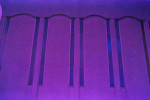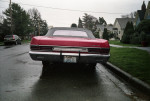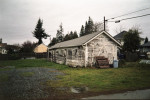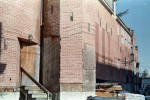Jan
22
2017

As I have posted previously I really like using the Canon A1 for taking long low light exposures and I also like the halo around light sources that Cinestill 800 provides. So I keep pairing these two up like they are a couple.
One issue that has come up for me is the remnants of the ramjet removal has reared its head several times. It’s primarily seen in darker images. For this reason I will need to rethink the way I expose and scan this film. I’ve tended to perhaps under expose at times with the intention of highlighting lights in the scene but when scanned this seems to reveal the residue of the remjet. I had a particularly egregious example of this that Cinestill remedied by sending me replacement rolls
As I haven’t seen this issue from other users of the film I now have to conclude it is something I am doing. No other film is effected this way during my processing so it leaves me to believe that it is always there to a degree its just a matter of the ratio of it to the recorded image on the negative. If during scanning your trying to extract details from a thin negative then it is likely going to show. Because I still want to continue to use it for nocturnes I am going to increase the amount of exposure I do and see if I get a better result.

It can be much worse than shown in the above image as well. But when it does work out I have been pleased with the look.

Some more images from the same roll
1 comment | posted in Cameras, Photography, Processing
Jan
14
2017

While I often shoot with expired film I rarely will use a roll of film found inside an old camera. Who knows how many times its been exposed or the camera opened up just to look at the film. For some reason though I just thought why not with this roll that came inside my Canon A1. I knew that the front end of the roll had definitely been exposed to light as I had opened the camera myself with the film in it. So I skipped ahead 8 frames and started shooting it in my Pentax MZ6. Not wanting to commit too much time to a roll of film that in all likelihood wouldn’t result in a single image I used them all up during a short walk. Wow what a strange result. I’ve never seen such a strong colour shift, let’s call it violent violet or malevolent mauve. It reminds me a little of Lomochrome Purple but in this case it lays that purple blanket over everything rather than shifting colours around. In case your wondering if it was possibly the processing, this roll was done at the same time as another one that did not have any colour casts.
Lomochrome Purple gives results more like this.
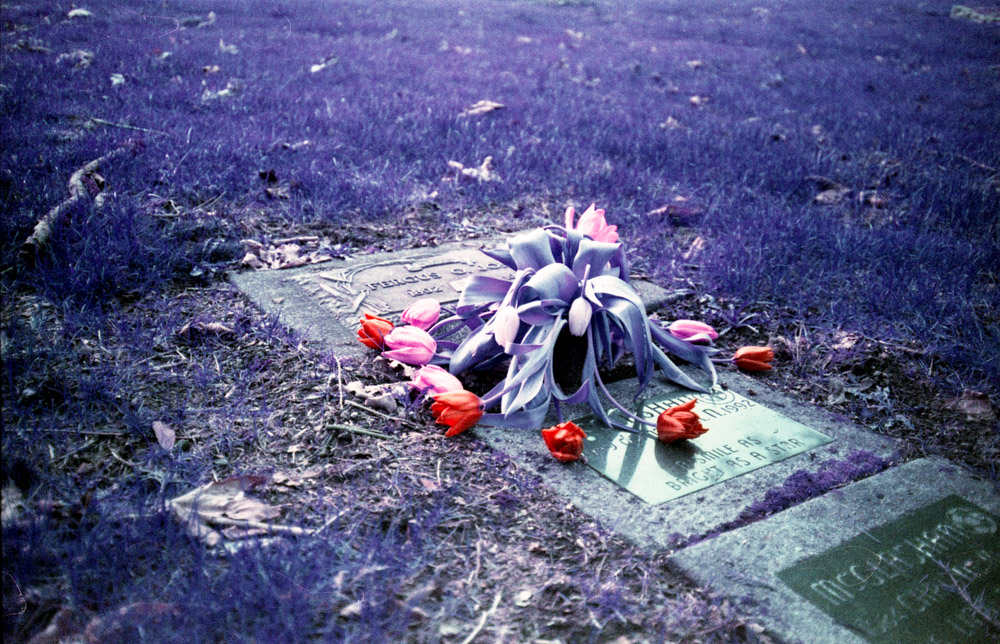
no comments | posted in Photography, Processing
Jan
3
2017

Throwing a Yashica Ninja Star isn’t likely to accomplish much other than a pile of broken plastic. Taking pictures with a Yashica Ninja Star is not much better. The Ninja Star is the sort of camera you might have expected to see on a late night informercial in the early 1990s. ‘But wait that’s not all you get not one but two focal lengths!’
Those focal lengths are 35mm and with extra elements 55mm. Two focal lengths are not the only limitation of the camera, the maximum apertures are a none to bright f5.6 and f8.5 and its DX coding is designed to read only ASA 100-400.
Like other nondescript plastic cameras of its era though if you throw some film in it your going to get something it’s just a question of what. It so happens that the lens on the Ninja Star while not great doesn’t embarrass itself even at both focal lengths.
It’s also nice that it takes AA batteries rather than an expensive lithium one.
no comments | posted in Cameras, Photography


















